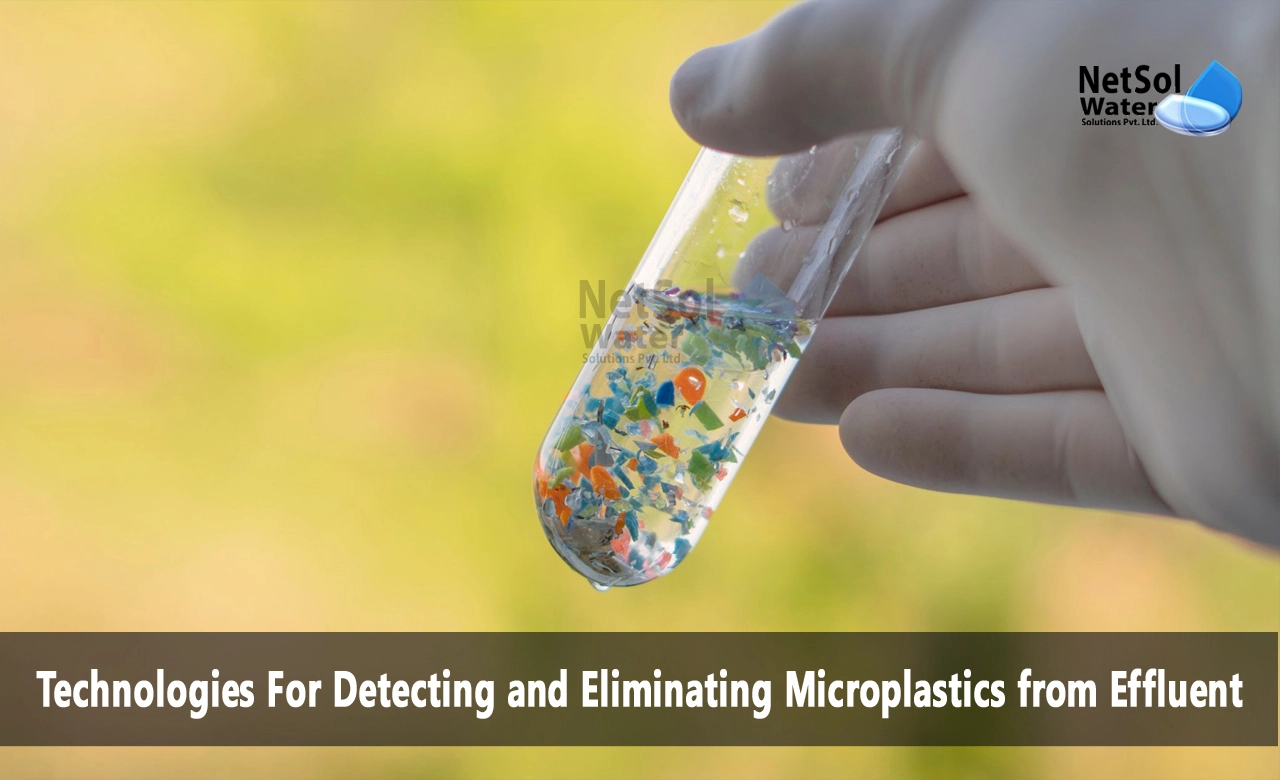Technologies For Detecting and Eliminating Microplastics from Effluent
Microplastics, defined as plastic particles less than 5mm in size, are an emerging environmental pollutant found in wastewater effluent. As plastics break down into smaller pieces, microplastics make their way into wastewater treatment plants and eventually into rivers, lakes, and oceans. Developing technologies to detect and eliminate microplastics from effluent is an important step in reducing this form of pollution. We provide an overview of current and emerging technologies for microplastic detection and removal in wastewater treatment.
Technologies For Microplastic Detection
Detection Technologies
A variety of technologies are being developed and tested to detect microplastics in wastewater. These can be divided into bulk analysis methods that quantify total microplastic concentration, and particle analysis methods that provide information on size, shape and polymer type.
Bulk analysis techniques include gravimetric analysis, where samples are filtered and weighed to determinetotal mass of solids. However, this technique does not differentiate between microplastics and other suspended solids. Another approach is thermal degradation methods, where samples are heated and pyrolyzed. The quantity of hydrocarbons released indicates the amount of plastic present. These bulk methods provide total microplastic concentration but no information on particle characteristics.
Particle analysis techniques that identify microplastics include spectroscopy, where plastic polymers are identified by unique spectral signatures. Fourier-transform infrared (FTIR) spectroscopy is commonly used, along with Raman spectroscopy. These methods can determine polymer type. Another technique is scanning electron microscopy (SEM), which provides detailed imaging of microplastic size, shape and morphology. Adding an energy dispersive X-ray spectrometer (EDS) to SEM allows for elemental analysis of samples as well.
While spectroscopy and microscopy provide useful particle analysis, they are time and labor intensive. New techniques aim to automate identification and quantification of microplastics. These include auto-samplers with FTIR or Raman, and use of hyperspectral imaging technologies. Overall, a combination of bulk and particle analysis methods provides comprehensive microplastic characterization in wastewater.
Removal Technologies
A variety of technologies are also being developed to remove microplastics from wastewater effluent. These can be categorized as 1) preliminary treatment methods, 2) primary treatment, 3) secondary treatment, and 4) tertiary treatment/polishing.
Preliminary treatment methods aim to prevent microplastics from entering wastewater plants. Installation of filters and screens on storm drains and washing machine outlets is one approach. Floating trash barriers installed at plant inlets is another prevention method.
Primary treatment methods include coagulation, flocculation and sedimentation. Chemical coagulants like ferric chloride are added, binding microplastics into heavier aggregates that settle out by gravity. Dissolved air floatation causes plastics to float to the surface and be skimmed off.
Secondary biological treatment methods leverage microbial digestion of organics. While microplastics are not broken down, they become concentrated in sludge, which can then be filtered out. Advanced methods like membrane bioreactors can achieve filtration down to 0.1 microns, removing nearly all microplastics.
Finally, tertiary treatment polishing steps like media filtration and cloth filters can catch remaining microplastics. Sand filters, granulated active carbon filters and nutshell media filters have been tested. Membrane filtration like ultrafiltration and reverse osmosis are also options.
While individual technologies have limitations, combining multiple approaches through the treatment train offers the best microplastic removal. Further research aims to optimize integration of technologies and evaluate costs and benefits.
Conclusion
Microplastics are an emerging pollutant requiring new detection and elimination methods. Bulk analysis techniques like gravimetry and thermal degradation indicate overall microplastic concentrations in effluent, while particle analysis methods like spectroscopy and microscopy provide detail on plastic polymer types, sizes and shapes. For removal, combining preventive measures, coagulation/flocculation, bioreactor digestion, cloth filtration and advanced membrane techniques through the treatment train offers a comprehensive approach.
Ongoing research continues to refine and improve both detection techniques and removal technologies. Automated sampling and hyperspectral imaging will enhance particle analysis capabilities. Combining multiple treatment technologies in new configurations, and evaluating costs versus benefits for specific situations, will optimize elimination strategies.
As the problem of microplastic pollution grows, developing and deploying effective and affordable techniques for detection and elimination from wastewater effluent becomes increasingly important. While challenges remain, emerging technologies provide promising pathways to reducing microplastic discharge to the environment. A combination of innovative research and practical implementation will lead to real-world solutions for this critical environmental issue.
Netsol Water is Greater Noida-based leading water & wastewater treatment plant manufacturer. We are industry's most demanding company based on client review and work quality. We are known as best commercial RO plant manufacturers, industrial RO plant manufacturer, sewage treatment plant manufacturer, Water Softener Plant Manufacturers and effluent treatment plant manufacturers. Apart from this 24x7 customer support is our USP. Call on +91-9650608473, or write us at enquiry@netsolwater.com for any support, inquiry or product-purchase related query.



